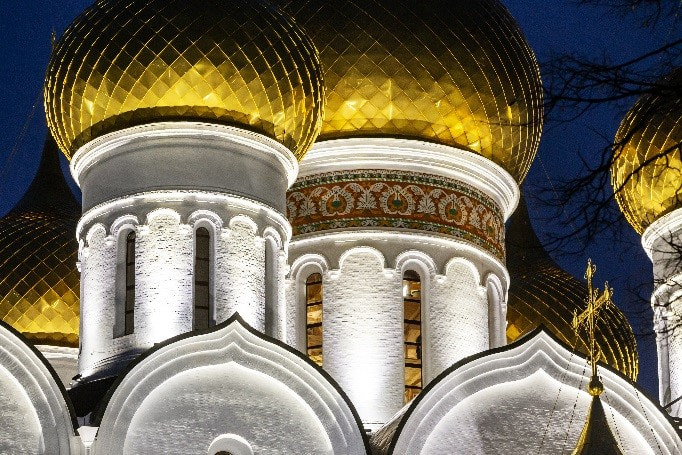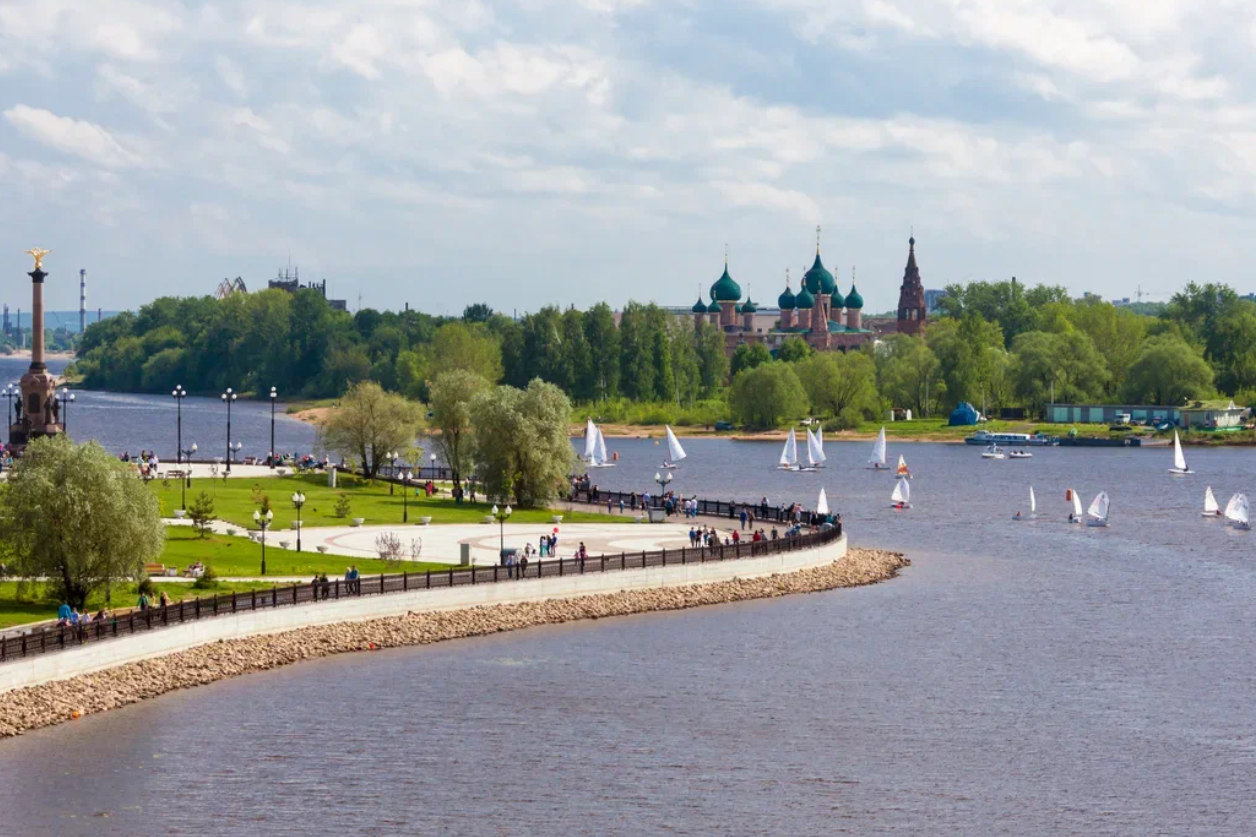We start our walk from the river station, whose designers and builders were awarded the RSFSR State Prize.
• After just 100 meters, we will plunge into the 18th century, marked by the heyday of the merchant class. I will tell you how the historical center of Yaroslavl was included in the list of UNESCO protected sites.
• Walking along the fence of the Volga embankment, admire the facade of the Governor's House and find out how much Yaroslavl owes to Emperor Alexander I.
• I will introduce you to the stories of merchant mansions, in one of which the disgraced Duke Biron lived for almost two decades.
• Moving further and further into the 17th century, we will get acquainted with the peculiarities of the Yaroslavl school of architecture at the first stone church in the territory of the Earthen City - the temple of Nikola Nadein and the first church, in the decoration of the facade of which tiles were used, the Church of the Nativity of Christ.
• One more step – and we are in the era of the reign of the young Yaroslav, later nicknamed the Wise. After crossing the Medveditsky ravine, we will stop at the site of the foundation of the city and learn its most ancient legend.
• Let's get acquainted with the Ilyinsko-Tikhonovskaya Church, which resembles the Roman Pantheon, built on the site of the first Yaroslavl temple
• Admire the tiled painting of the modern Assumption Cathedral, built on the site of a stone church erected in 1215. We learn about the difficult fate of this temple, which was razed to the ground three times and, like a phoenix, was reborn from the ashes each time.
• And, of course, we will visit the very heart of the embankment – Yaroslavskaya Strelka. Here we will certainly take spectacular photos and selfies.
1. Assumption Cathedral



The Assumption Cathedral is located on the site of the oldest stone church in Yaroslavl, founded in 1215. During its history, the temple burned and was destroyed several times, in 1937 it was blown up, and a park was laid out in its place. Today, the arrow of the Volga and Kotorosli is decorated with Yaroslav Uspensky Cathedral, restored by the millennium, with white stone walls, golden domes and rich tiled decorations. The cathedral houses several revered shrines – the relics of the holy Princes Basil and Constantine of Yaroslavl, as well as Fyodor Cherny and his sons, and a list of the Yaroslavl Icon of the Mother of God.
2. Памятник Николаю Алексеевичу Некрасову



The monument to the remarkable Russian poet N. A. Nekrasov was erected on the banks of the Volga River in 1958. Sculptor G. I. Motovilov, architect L. M. Polyakov.
3. Музей им. Вадима Орлова



The basis of the museum is Orlov's collection: Russian and foreign porcelain of the XVIII–XX centuries, cast iron, silver, household items. Porcelain plastic from private Russian factories of Gardner, Kuznetsov, Popov, and Miklashevsky is of particular value.
The building of the House of the Society of Doctors itself is also interesting – a federal architectural monument, restored with private funds in 2014-2018. Its appearance recalls the first third of the 19th century, but the history of the mansion is more complicated: its roots date back to the 17th century, and the basement of the building with storage chambers has been preserved from this period.
4. Yaroslavl City History Museum



The Yaroslavl City History Museum is located in a merchant's estate of the late 19th century, which belonged to the merchant V.Ya. Kuznetsov. Today, the history of the ancient city on the Volga is presented here.
5. Yaroslavl Art Museum



The main building of the Yaroslavl Art Museum is the Governor's House. It was built at the behest of Alexander I as the imperial travel palace. The construction of the estate was carried out in one year at the expense of the treasury under the supervision of the Yaroslavl governor. Since its construction, it has been used as the official residence of the governors. All Russian rulers, from Alexander I to Nicholas II, visited the governor's house.
17 governors lived and worked in the Governor's House, starting with Alexander Mikhailovich Bezobrazov and ending with Nikolai Leonidovich Obolensky.
Since 1970, it has been the main building of the Yaroslavl Art Museum, where expositions and exhibition halls are located, concert programs and receptions are held.
6. Митрополичьи палаты



The Metropolitan Chambers are one of the oldest buildings in the city, a fine example of ancient Russian stone civil architecture. They were built in 1682 by Metropolitan Jonah Sysoevich of Rostov, the famous builder of the Rostov Kremlin. Since 1977, the department of Ancient Russian art, the exposition and exhibition halls have been located here.
7. Arrow



Strelka is the oldest part of Yaroslavl, and it is from this place that the history of the city began.






